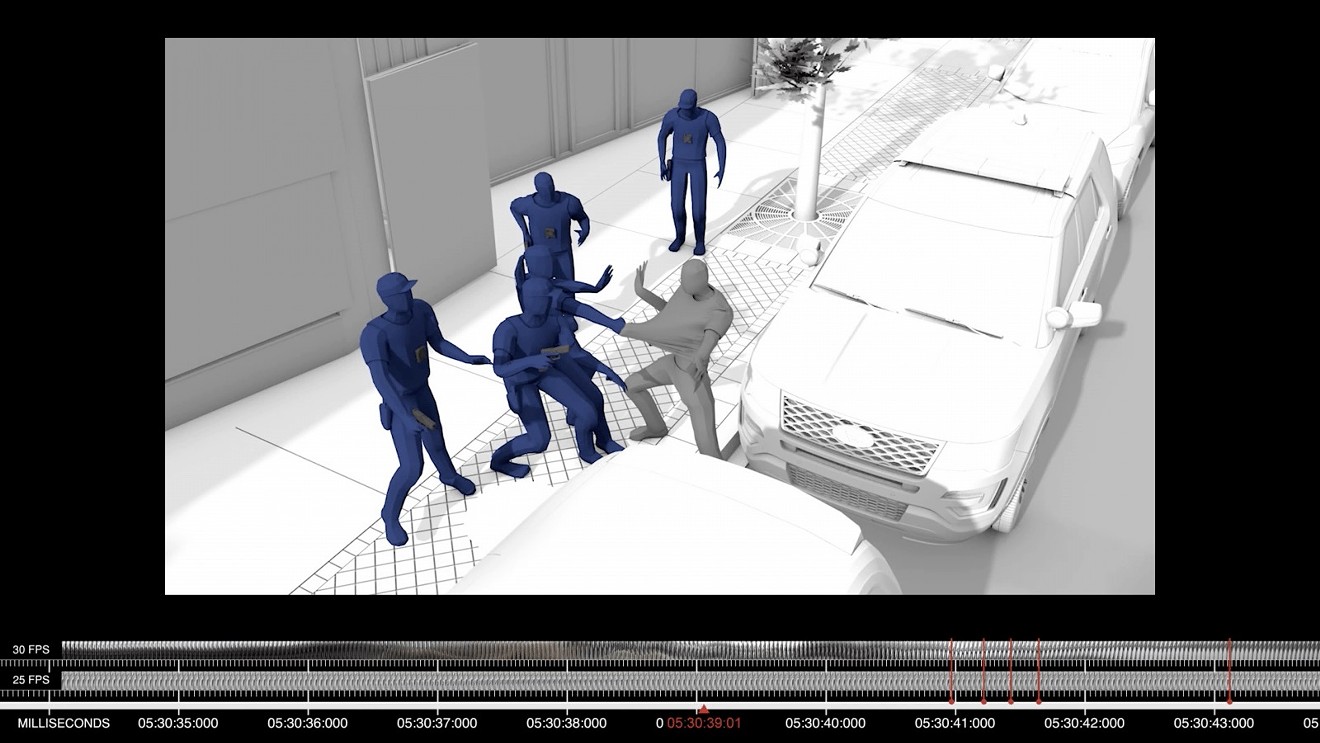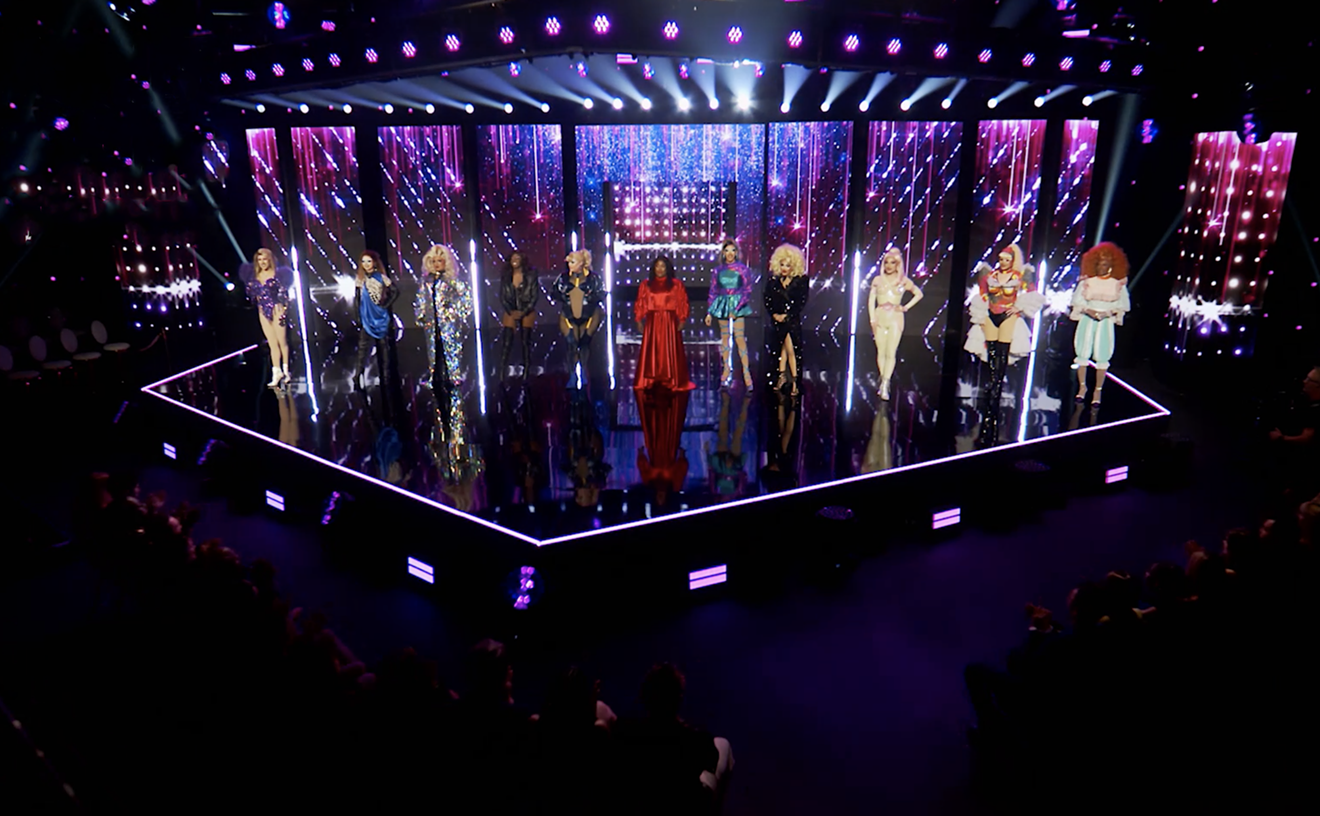It's a sentence that rings with depressing familiarity for people in the United States. Another incidence of officer violence; another over-policed black neighborhood; another round of vague platitudes to explain a seemingly preventable tragedy. For us, it's a sentence that opens painful and polarizing conversations with no apparent solution. But as it's presented on Forensic Architecture's website, that sentence opens an investigation — one of many on display in the exhibition "Forensic Architecture: True to Scale" at Miami Dade College's Museum of Art and Design (MOAD) beginning Wednesday, February 19.
Forensic Architecture is an agency based in the University of London. It was born from an named for an academic field developed by Eyal Weizman, a professor of spatial and visual cultures. In a purely mechanical sense, Weizman explains the agency's work as "using architectural skills to build 3D environments where we can locate material online to analyze things."
However, that description doesn't quite do justice to its lofty mission statement: "To develop, disseminate, and employ new techniques for evidence gathering and presentation in the service of human rights and environmental investigations and in support of communities exposed to state violence and persecution."
Sophie Landres, MOAD's curator of public programs, puts it this way: "True forensic architecture is a consideration of how the built environment enters legal and political processes. Architecture is approached as a recording device through which we can look at events that have unfolded in the world around us."
To get an applied sense of what Forensic Architecture does, consider again the murder of Harith Augustus. As part of its early response to the shooting, the Chicago PD released a statement that included this sentence: "The decision to use lethal force is made in a split second and is based on the safety of the officer and also the surrounding community."
On its face, that statement seems to reduce Augusts' killing to a singular and impenetrable moment. But in collaboration with the Invisible Institute, Forensic Architecture (FA) took the opportunity to dig deeply into that split second — a second that could be split into somewhere between 25 and 30 frames depending upon the camera.
By culling imagery from a body cam, street surveillance, and dashboard video, the team was able to create models of the events leading up to and directly following the moment Officer Dillan Halley fired his weapon. The models are played backward and forward, from angles uncovered by the cameras on the scene, and at various speeds. With help from a neuroscientist, a narrator takes exhibit guests through various interpretations of the "split second" theory, deconstructing a seemingly impenetrable moment toward understanding its larger context."What is most frightening about our current media environment is this cynical position that truth is a matter of opinion. It’s a tactic that is used so that atrocities can continue in our name."
tweet this
Despite Chicago PD's implication that we'll never "know" enough about what happened during the fatal incident, Forensic Architecture's video is a strangely calming reassurance of our instincts: that we're being lied to by the very people who are supposed to protect us.
"Forensic architecture provides this wonderfully hopeful defense against today’s purveyors of misinformation," Landres says. "What is most frightening about our current media environment is this cynical position that truth is a matter of opinion. It’s a tactic that is used so that atrocities can continue in our name."
Of course, the U.S. populace isn't the only one susceptible to lies. "Forensic Architecture: True to Scale" focuses on far more countries than the United States and displays pieces from more than a dozen counter-investigations conducted all over the world. Weizman makes it a point to include the word "counter" and expands its use to counter-cartography and counter-forensics in order to emphasize the nature of FA's work keeping governments and other power structures accountable.
"We investigate the investigators," he explains, a task that has become increasingly urgent as the truth is rendered more and more malleable. But it's not a problem without a solution, according to Weizman: "We can make truth up from below. We want to take on the monopoly on information."
For Landres, the purpose of this exhibit is rooted in our responsibility to collectively create that truth through a proper understanding and use of the tools at our disposal.
"We’re at a crisis. Authoritarian regimes around the world are fomenting our confusion," she says. "What I’m hoping to offer our audience with this exhibition is not only a selection of 13 investigations that verify the evidence pertaining to different incidents around the world, but... about knowing the processes used to arrive at those conclusions. The critical ability to discern is what is so valuable and, I think, radically educational about this exhibition."
To complement the interactive environment built within the exhibition, Landres is also working to develop programming that applies Forensic Architecture's techniques in more personalized contexts. Ultimately the goal is for crowdsourced and digitized data to become widespread all over the world, creating more and more counter-investigators dedicated to discerning what the powers that be are actually doing.
"Knowledge is not a shiny object that you can buy and put onto your mantel," Landres emphasizes. "Knowledge is a process. It has to be activated. It’s something that’s shared. More than that, I hope that you will learn about the processes that go into knowledge production and which processes are carried through with integrity and which ones are devised to conceal dishonorable actions. Beyond designing commodities, we are designing the world in which we want to live."
"Forensic Architecture: True to Scale." Wednesday, February 19, through September 27 at the Museum of Art and Design (MOAD) at the MDC Freedom Tower, 600 Biscayne Blvd., Miami; 305-237-7700; mdcmoad.org. Admission is free with RSVP via eventbrite.com.











